
Background:
Independent from France in 1960, Senegal joined with The Gambia to form the nominal confederation of Senegambia in 1982. However, the envisaged integration of the two countries was never carried out, and the union was dissolved in 1989. Despite peace talks, a southern separatist group sporadically has clashed with government forces since 1982. Senegal has a long history of participating in international/ The Gambia is almost an enclave of Senegal peacekeeping.
Senegal and Islam
The Toucouleur people, who were among the early inhabitants of Senegal, converted to Islam in the 11th century, but their religious beliefs retained strong elements of animism. Other sources say that the Berbers brought Islam to Senegal in the eigth century.
Although Senegal is neither a large nor a strategically located country, it has nonetheless played a prominent role in African politics since its independence. As a black nation that is more than 90% Muslim, Senegal has been a diplomatic and cultural bridge between the Islamic and black African worlds.
The Toucouleur and Fulani peoples of interior Senegal helped spread Islam across large areas of West Africa, from Mali to Nigeria. During the 1990s the Muridiyah, an Islamic brotherhood, remained a powerful force in Senegalese society.
Today, Islam in Senegal is mainly based on the Brotherhoods, centred around two great marabout families. In fact, nowhere else do marabouts command as much influence as in Senegal where several Brotherhoods are active. Most Senegalese Muslims tend to place themselves under the authority and direction of the Great Marabout, in much the same way as a Catholic obeys the Church's commandments. The Brotherhoods are led by Khalifs, always chosen from the Founder's family. To belong to a marabout family is to be someone special. It's not a clergy but something like it.
Senegal and slavery
Gor?e Island became a major center for the Atlantic slave trade throughout the 1700s, when millions of Africans were shipped from there to North America.
The British took parts of Senegal at various times, but the French gained possession in 1840 and made it part of French West Africa in 1895. In 1946, together with other parts of French West Africa, Senegal became an overseas territory of France. On June 20, 1960, it became an independent republic federated with Mali, but the federation collapsed within four months.
Geography
Location: Western Africa, bordering the North Atlantic Ocean, between Guinea-Bissau and Mauritania
Geographic coordinates: 14 00 N, 14 00 W
Map references: Africa
Area:
total: 196,190 sq km
land: 192,000 sq km
water: 4,190 sq km
Area - comparative: slightly smaller than South Dakota
Land boundaries:
total: 2,640 km
border countries: The Gambia 740 km, Guinea 330 km, Guinea-Bissau 338 km, Mali 419 km, Mauritania 813 km
Climate
Tropical; hot, humid; rainy season (May to November) has strong southeast winds; dry season (December to April) dominated by hot, dry, harmattan wind
Terrain: generally low, rolling, plains rising to foothills in southeast
Elevation extremes:
lowest point: Atlantic Ocean 0 m
highest point: unnamed feature near Nepen Diakha 581 m
Natural Resources:
fish, phosphates, iron ore
Land use:
arable land: 12%
permanent crops: 0%
permanent pastures: 16%
forests and woodland: 54%
other: 18% (1993 est.)
Irrigated land: 710 sq km (1993 est.)
People
Population: 9,987,494 (July 2000 est.)
Age structure:
0-14 years: 45% (male 2,237,678; female 2,213,632)
15-64 years: 52% (male 2,501,649; female 2,729,412)
65 years and over: 3% (male 152,236; female 152,887) (2000 est.)
Population growth rate: 2.94% (2000 est.)
Birth rate: 37.94 births/1,000 population (2000 est.)
Death rate: 8.57 deaths/1,000 population (2000 est.)
Net migration rate: 0 migrant(s)/1,000 population (2000 est.)
Sex ratio:
at birth: 1.03 male(s)/female
under 15 years: 1.01 male(s)/female
15-64 years: 0.92 male(s)/female
65 years and over: 1 male(s)/female
total population: 0.96 male(s)/female (2000 est.)
Infant mortality rate: 58.08 deaths/1,000 live births (2000 est.)
Life expectancy at birth:
total population: 62.19 years
male: 60.6 years
female: 63.82 years (2000 est.)
Total fertility rate: 5.21 children born/woman (2000 est.)
Nationality:
noun: Senegalese (singular and plural)
adjective: Senegalese
Ethnic groups:
Wolof 43.3%, Pular 23.8%, Serer 14.7%, Jola 3.7%, Mandinka 3%, Soninke 1.1%, European and Lebanese 1%, other 9.4%
Religions:
Muslim 92%, indigenous beliefs 6%, Christian 2% (mostly Roman Catholic)
Languages:
French (official), Wolof, Pulaar, Jola, Mandinka
Literacy:
definition: age 15 and over can read and write
total population: 33.1%
male: 43%
female: 23.2% (1995 est.)
Government and politics
Government type: republic under multiparty democratic rule
Capital: Dakar
Administrative divisions: 10 regions (regions, singular - region); Dakar, Diourbel, Fatick, Kaolack, Kolda, Louga, Saint-Louis, Tambacounda, Thies, Ziguinchor
Independence: 4 April 1960 from France; complete independence was achieved upon dissolution of federation with Mali on 20 August 1960 (The Gambia and Senegal signed an agreement on 12 December 1981 (constituted February 1982) that called for the creation of a loose confederation to be known as Senegambia, but the agreement was dissolved on 30 September 1989)
National holiday: Independence Day, 4 April (1960)
Constitution: 3 March 1963, revised 1991
Legal system: based on French civil law system; judicial review of legislative acts in Constitutional Court; the Council of State audits the government's accounting office; Senegal has not accepted compulsory ICJ jurisdiction
Suffrage: 18 years of age; universal
Executive branch:
chief of state: President Abdoulaye WADE (since NA 2000)
head of government: Prime Minister Niasse MOUSTAPHA (since NA 2000)
cabinet: Council of Ministers appointed by the prime minister in consultation with the president
elections: president elected by popular vote for a seven-year term; election last held 27 February 2000 (next to be held 27 February 2007); prime minister appointed by the president
election results: Abdoulaye WADE elected president; percent of vote in the second round of voting - Abdoulaye WADE (PDS) NA%, Abdou DIOUF (PS) NA%
Legislative branch: unicameral National Assembly or Assemblee
Nationale (140 seats; members are elected by direct popular vote to serve five-year terms)
Eelections: last held 24 May 1998 (next to be held NA May 2003)
election results: percent of vote by party - PS 50%, PDS 19%, UDS-R 13%, And Jef 5%, LD-MPT 4%, CDP 2%, FSD 1%, PDS-R 1%, RND 1%, BGC 1%, PIT 1%, other 2%; seats by party - PS 93, PDS 23, UDS-R 11, And Jef 4, LD-MPT 3, CDP 1, FSD 1, PDS-R 1, RND 1, BGC 1, PIT 1
Judicial branch: under the terms of a reform of the judicial system implemented in 1992, the principal organs of the judiciary are as follows: Constitutional Court; Council of State; Court of Final Appeals or Cour de Cassation; Court of Appeals
Political parties and leaders: African Party for Democracy and Socialism or And Jef (also known as PADS/AJ) [Landing SAVANE, secretary general]; African Party of Independence [Majhemout DIOP]; Democratic and Patriotic Convention or CDP (also known as Garab-Gi) [Dr. Iba Der THIAM]; Democratic League-Labor Party Movement or LD-MPT [Dr. Abdoulaye BATHILY]; Front for Socialism and Democracy or FSD [Cheikh Abdoulaye DIEYE]; Gainde Centrist Bloc or BGC [Jean-Paul DIAS]; Independence and Labor Party or PIT [Amath DANSOKHO]; National Democratic Rally or RND [Madier DIOUF]; Senegalese Democratic Party or PDS [Abdoulaye WADE]; Senegalese Democratic Party-Renewal or PDS-R [Serigne Lamine DIOP, secretary general]; Senegalese Democratic Union-Renewal or UDS-R [Mamadou Puritain FALL]; Socialist Party or PS [President Abdou DIOUF]; Union for Democratic Renewal or URD [Djibo Leyti KA]; other small parties
Political pressure groups and leaders: labor; Muslim brotherhoods; students; teachers
International organization participation: ACCT, ACP, AfDB, CCC, ECA,
Diplomatic representation in the US:
chief of mission: Ambassador Mamadou Mansour SECK
chancery: 2112 Wyoming Avenue NW, Washington, DC 20008
telephone: [1] (202) 234-0540
Diplomatic representation from the US:
chief of mission: Ambassador Harriet L. ELAM-THOMAS
embassy: Avenue Jean XXIII at the corner of Avenue Kleber, Dakar
mailing address: B. P. 49, Dakar
telephone: [221] 823-4296, 823-7384
FAX: [221] 822-2991
Flag description: three equal vertical bands of green (hoist side), yellow, and red with a small green five-pointed star centered in the yellow band; uses the popular pan-African colors of Ethiopia
Economy
Overview: In January 1994, Senegal undertook a bold and ambitious economic reform program with the support of the international donor community. This reform began with a 50% devaluation of Senegal's currency, the CFA franc, which is linked at a fixed rate to the French franc.
Government price controls and subsidies have been steadily dismantled. After seeing its economy contract by 2.1% in 1993, Senegal made an important turnaround, thanks to the reform program, with real growth in GDP averaging 5% annually in 1995-99. Annual inflation has been pushed down to 2%, and the fiscal deficit has been cut to less than 1.5% of GDP. Investment rose steadily from 13.8% of GDP in 1993 to 16.5% in 1997. As a member of the West African Economic and Monetary Union (UEMOA), Senegal is working toward greater regional integration with a unified external tariff.
Senegal also realized full Internet connectivity in 1996, creating a miniboom in information technology-based services. Private activity now accounts for 82% of GDP. On the negative side, Senegal faces deep-seated urban problems of chronic unemployment, juvenile delinquency, and drug addiction. Real GDP growth is expected to rise above 6%, while inflation is likely to hold at 2% in 2000-2001.
GDP: purchasing power parity - $16.6 billion (1999 est.)
GDP - real growth rate: 5% (1999 est.)
GDP - per capita: purchasing power parity - $1,650 (1999 est.)
GDP - composition by sector:
agriculture: 19%
industry: 20%
services: 61% (1997 est.)
Household income or consumption by percentage share:
lowest 10%: 1.4%
highest 10%: 42.8% (1991)
Inflation rate (consumer prices): 2% (1999 est.)
Labor force - by occupation: agriculture 60%
Unemployment rate: NA%; urban youth 40%
Budget
Revenues: $885 million
expenditures: $885 million, including capital expenditures of $125 million (1996 est.)
Industries
Agricultural and fish processing, phosphate mining, fertilizer production, petroleum refining, construction materials
Industrial production growth rate: 7% (1998 est.)
Electricity - production: 1.2 billion kWh (1998)
Electricity - production by source:
fossil fuel: 100%
hydro: 0%
nuclear: 0%
other: 0% (1998)
Electricity - consumption: 1.116 billion kWh (1998)
Electricity - exports: 0 kWh (1998)
Electricity - imports: 0 kWh (1998)
Agriculture
Products: peanuts, millet, corn, sorghum, rice, cotton, tomatoes, green vegetables; cattle, poultry, pigs; fish
Exports: $925 million (f.o.b., 1998)
Exports - commodities: fish, ground nuts (peanuts), petroleum products, phosphates, cotton
Exports - partners: France 22%, Italy, India, Cote d'Ivoire, Mali (1998)
Imports: $1.2 billion (f.o.b., 1998)
Imports - commodities: foods and beverages, consumer goods, capital goods, petroleum products
Imports - partners: France 36%, other EU countries, Nigeria, Cameroon, Cote d'Ivoire, Algeria, US, China, Japan (1998)
Debt - external: $3.4 billion (1998 est.)
Economic aid - recipient: $647.5 million (1995)
Currency: 1 Communaute Financiere Africaine franc (CFAF) = 100 centimes
Exchange rates: Communaute Financiere Africaine francs (CFAF) per US$1 - 647.25 (January 2000), 615.70 (1999), 589.95 (1998), 583.67 (1997), 511.55 (1966), 499.15 (1995)
note: since 1 January 1999, the CFAF is pegged to the euro at a rate of 655.957 CFA francs per euro
Fiscal year: calendar year
Communications
Telephones - main lines in use: 82,000 (1995)
Telephones - mobile cellular: 122 (1995)
Telephone system:
domestic: above-average urban system; microwave radio relay, coaxial cable and fiber-optic cable in trunk system
international: 4 submarine cables; satellite earth station - 1 Intelsat (Atlantic Ocean)
Radio broadcast stations: AM 10, FM 14, shortwave 0 (1998)
Radios: 1.24 million (1997)
Television broadcast stations: 1 (1997)
Televisions: 361,000 (1997)
Internet Service Providers (ISPs): 4 (1999)\
Transportation
Railways:
total: 906 km
narrow gauge: 906 km 1.000-meter gauge (70 km double track)
Highways:
total: 14,576 km
paved: 4,271 km
unpaved: 10,305 km (1996 est.)
Waterways: 897 km total; 785 km on the Senegal river, and 112 km on the Saloum river
Ports and harbors: Dakar, Kaolack, Matam, Podor, Richard Toll, Saint-Louis, Ziguinchor
Airports: 20 (1999 est.)
Airports - with paved runways:
total: 10
over 3,047 m: 1
1,524 to 2,437 m: 7
914 to 1,523 m: 2 (1999 est.)
Airports - with unpaved runways:
total: 10
1,524 to 2,437 m: 5
914 to 1,523 m: 4
under 914 m: 1 (1999 est.)
Military
Military branches: Army, Navy, Air Force, National Gendarmerie, National Police (Surete Nationale)
Military manpower - military age: 18 years of age
Military manpower - availability:
males age 15-49: 2,218,920 (2000 est.)
Military manpower - fit for military service:
males age 15-49: 1,158,893 (2000 est.)
Military manpower - reaching military age annually:
males: 109,381 (2000 est.)
Military expenditures - dollar figure: $68 million (FY97)
Military expenditures - percent of GDP: 1.4% (FY97)

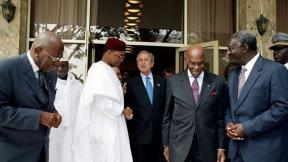
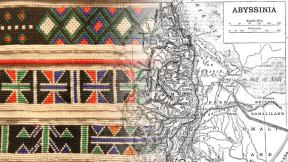
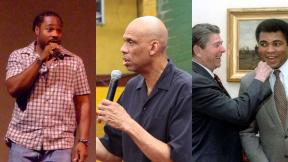
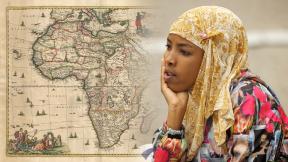
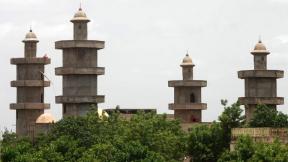


Comments
Excellent article, but it could have went more in detail about the Mourides. The Mouride Muslims are all over Senegal. The Mouride Teachings come from the founder Shaykh Amadou Bamba. We are taught to love all our Muslim brothers and sisters. Also to help and educate one another. But over all this was good. Thank you Soundvision......... Brother Malik!
Location
Add new comment